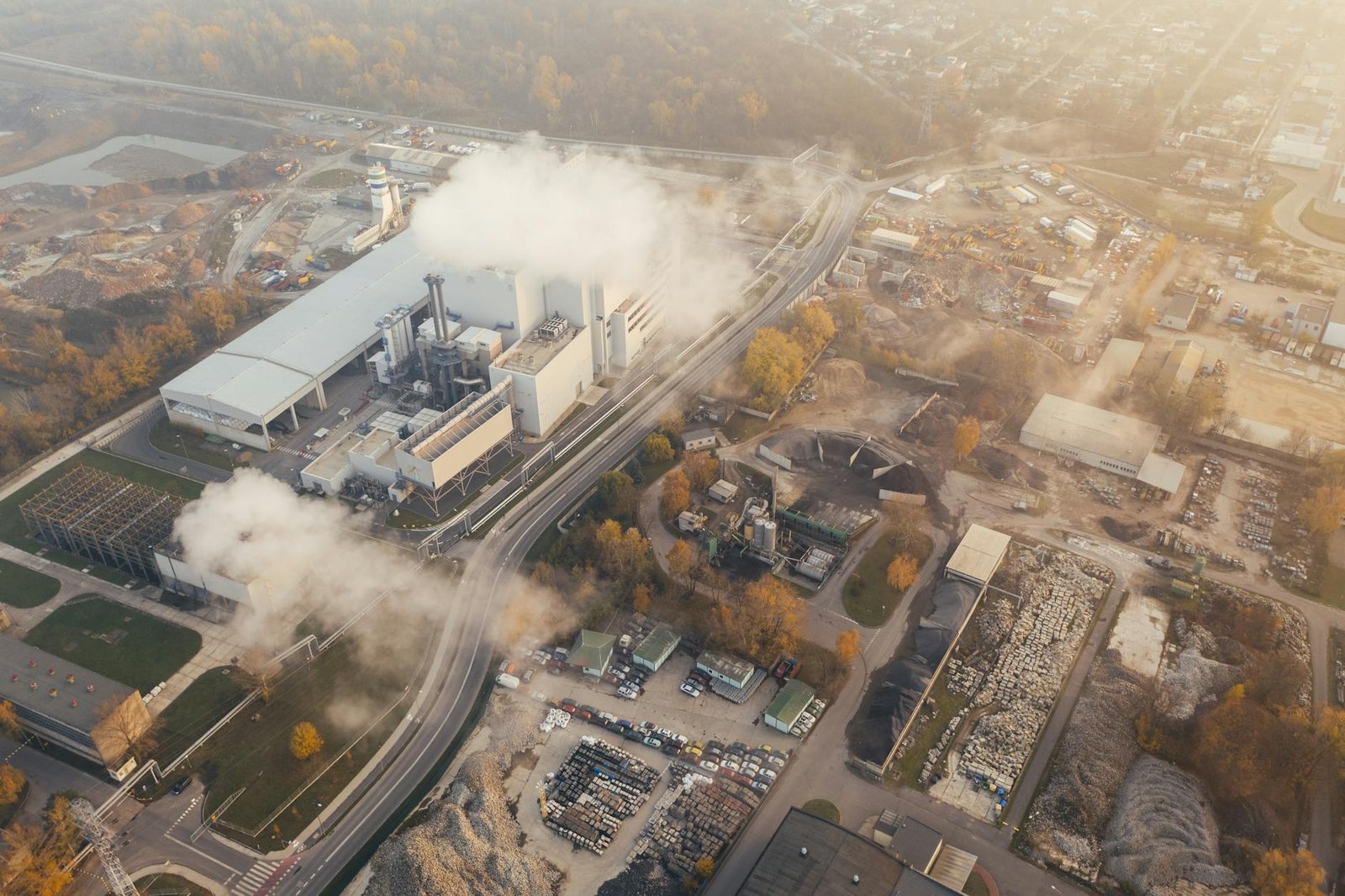Last Updated on January 3, 2025 by Daniele Lima
How Companies Can Reduce Their Carbon Footprint And Contribute To The Climate
Reducing your carbon footprint has become a global priority in the search for a more sustainable future. Companies across all sectors understand that adopting greener practices is not only an environmental responsibility but also a competitive advantage. In this article, we will examine effective carbon reduction strategy that companies can implement to reduce their carbon emissions, thereby directly contributing to climate change mitigation.
Table of Contents
Carbon Footprint Reduction: Business Benefits Guide
Carbon footprint refers to the total amount of greenhouse gases (GHG) emitted directly or indirectly by a company, activity, or product. These gases, such as carbon dioxide (CO2) and methane (CH4), are mainly responsible for global warming, causing rising temperatures and changes in weather patterns.
Companies that reduce their emissions not only help combat the climate crisis but can also benefit in numerous ways, including:
Cost Savings: More efficient use of energy and resources can reduce operating expenses.
Improve reputation: consumers are increasingly aware of the environmental impact of their purchases and prefer sustainable brands.
Regulatory Compliance: Governments around the world are implementing stricter regulations to limit emissions, and the companies that adapt first will comply.
Corporate Carbon Reduction: Renewable Energy Solutions

Switching to renewable energy sources is one of the most effective ways to reduce carbon emissions. Solar, wind, and hydro energy are examples of clean sources that do not produce CO2 emissions during their generation. For companies, this change can be implemented in several ways:
Installation of solar panels: Companies can take advantage of their spaces, such as building roofs, to install solar panels and generate their own clean energy.
Purchase of renewable energy: In markets where clean generation is not viable, companies can choose to purchase energy from suppliers that use renewable sources.
Partnerships with renewable energy producers: Entering into long-term contracts with renewable energy suppliers is a safe way to ensure a reduction in your carbon footprint over time.
In addition to reducing emissions, investing in renewable energy can bring long-term financial benefits, with lower energy costs and, in some cases, the ability to sell surplus created into the electricity grid.
Carbon Reduction Technologies: Energy Efficiency Guide
Energy efficiency is one of the pillars of corporate sustainability. Using less energy to perform the same tasks directly reduces the amount of CO2 emitted by the company’s operations. Several measures can be taken:
Carbon Reduction Technologies: Energy Efficiency Guide
| Strategy | Description |
|---|---|
| Update Equipment and Infrastructure | Invest in energy-efficient solutions like ENERGY STAR-rated appliances, LED lighting systems, and advanced heating and cooling monitors to significantly reduce energy usage. |
| Automation and Monitoring | Utilize tools for real-time energy monitoring and automation to optimize energy consumption and eliminate wastage. Explore platforms like Schneider Electric for tailored solutions. |
| Education and Awareness | Conduct training sessions to promote energy-saving habits among employees. Encourage the adoption of sustainable practices through workshops and resources like Carbon Trust. |
Sustainable Carbon Reduction Methods: Circular Economy
The circular economy is a production model that aims to eliminate waste and preserve the products and materials used for as long as possible. Instead of following the linear “extract, produce, and dispose” model, the circular economy focuses on reduction, reuse, and recycling. For companies, this means:
Product redesign: Create products that can be reused, recycled, or composted at the end of their life.
Effective waste management: Implementation of recycling and reuse on carbon reduction program in the company’s operations, reducing the amount of waste sent to landfills.
Reverse logistics: Make it easier for consumers to return products for recycling or reuse. In addition to reducing environmental impact, the circular economy can generate new business opportunities, thus increasing business efficiency and competitiveness.
Carbon Reduction Transport: Green Fleet Solutions
The transport sector is one of the main sources of CO2 emissions. For companies that depend on the transport of goods or have fleets of vehicles, adopting sustainable mobility solutions can make a significant difference:
Use of electric or hybrid vehicles: Directly replacing fossil fuel vehicles with electric or hybrid vehicles reduces carbon emissions.
Route optimization: Using fleet management software to optimize delivery routes can reduce fuel consumption and therefore emissions.
Encourage public transport and carpooling: For companies with many employees, encouraging the use of public transport or carpooling among colleagues can reduce the carbon footprint associated with transport.
Emissions Compensation Strategies
Although reducing emissions should be a priority, many companies are unable to completely eliminate their carbon footprint. In this case, emissions offsetting may be a viable strategy. Compensation includes investing in projects that eliminate or avoid greenhouse gas emissions, such as:
Afforestation and reforestation: Planting trees helps capture CO2 from the atmosphere and can offset emissions created by company operations.
Carbon credits: Companies can buy carbon credits, which represent the reduction of one ton of CO2, in regulated or voluntary markets.
It is important to ensure that compensation projects are certified by recognized entities, guaranteeing the integrity and effectiveness of the compensation.
Interactive Tools for Sustainable Business Solutions
Empower your business with actionable insights for reducing carbon emissions and enhancing sustainability.
Stakeholder Engagement in Carbon Reduction
Finally, for carbon reduction strategies to be truly effective, it is essential that all company stakeholders are involved. This includes:
Collaborators: Creating an internal culture of sustainability is essential for the success of initiatives. Encouraging employees to adopt sustainable practices in their work routine can enhance results.
Suppliers: Working with suppliers who share the same sustainability commitments can help reduce emissions across the supply chain.
Customers: Educate consumers about the company’s efforts to reduce its carbon footprint and encourage them to make more sustainable choices.
Conclusion: A Sustainable Future Through Carbon Reduction
Reducing the carbon footprint is more than a trend: it is a necessity to guarantee a sustainable future. By adopting strategies such as the use of renewable energy, promoting the circular economy, and offsetting emissions, companies can not only play their role in combating climate change but also strengthen their competitiveness and reputation.
Switching to a sustainable business model requires commitment, but the benefits – both for the planet and for the bottom line – are undeniable
Frequently Asked Questions About Carbon Reduction
What is a carbon reduction strategy?
A carbon reduction strategy is a planned approach to decrease greenhouse gas emissions through methods like renewable energy adoption, energy efficiency improvements, and sustainable practices in business operations.
How much does carbon reduction cost for businesses?
Initial costs vary but many carbon reduction initiatives pay for themselves through energy savings within 2-5 years. Solar panels typically have a 5-7 year payback period, while LED lighting can pay off within 1-2 years.
What are the quickest ways to reduce carbon emissions?
The fastest methods include switching to LED lighting, optimizing heating/cooling systems, implementing smart energy management systems, and encouraging remote work policies.
How do companies measure carbon reduction?
Companies measure carbon reduction through carbon footprint calculations, energy audits, and emissions monitoring systems that track greenhouse gas outputs across operations.
What are businesses’ carbon reduction targets?
Many businesses aim for a 50% reduction in emissions by 2030 and net-zero emissions by 2050, aligning with global climate goals set by the Paris Agreement.







Leave a Reply